Monthly Archives: June 2020
19
18
17
Bengali filmmaker dons doctor’s hat to treat patients in cyclone-hit Sundarbans
Kamaleswar Mukherjee had been a full-time medical practitioner, having worked in state-run and private hospitals, before taking a plunge into the world of cinema in 2011 and directing several critically-acclaimed movies.

Bengali filmmaker Kamaleswar Mukherjee, also a qualified doctor, is treating patients in Cyclone Amphan-ravaged Sundarbans region of West Bengal.
He had been a full-time medical practitioner, having worked in state-run and private hospitals, before taking a plunge into the world of cinema in 2011 and directing several critically-acclaimed movies.
The director of movies like ‘Urochithi’, ‘Meghe Dhaka Tara’, ‘Chander Pahar’ and ‘Amazon Obhijaan’ said he was moved by the developments of 2019-20, starting with the anti-CAA protests followed by the COVID-19 outbreak and then Cyclone Amphan. The last left behind a trail of devastation in the Sundarbans.
“I was part of a community kitchen organised in Kolkata by students and youth for people hit by the lockdown.
After Cyclone Amphan struck Sundarbans, I decided to put to use my experience as a doctor,” Mukherjee told PTI on Saturday.
He joined hands with groups like the West Bengal Doctors’ Forum and the Shramajibi Swasthyo Udyog to help the affected people.
“I am just a foot soldier. I have been able to attend only a few of the 35 health camps organised by these groups.
From treating patients to ensuring maintenance of social distancing in queues and helping in manual work, we work as a team of health workers in the camps,” he said.
Mukherjee had been to areas in the Sundarbans like Patharpratima and Raidighi and has plans to visit Hasnabad on Sunday.
“We will continue reaching out to people in the worst-affected areas of South and North 24 Parganas districts,” he said.
Mukherjee, who was a student of Medical College and Hospital, Kolkata, said he is happy to see voluntary organisations and college students rushing to the aid of the people in distress, both due to the lockdown and Cyclone Amphan.
“In this ‘Krantikal’ (critical juncture), any conscientious person cannot just remain indifferent,” he said.
Mukherjee’s effort has been appreciated by people associated with the Bengali film industry. Filmmaker Anik Dutta wrote on Facebook, “Proud of you Kamal. I am filled with so much pride as I see the work of all these young men and women…”
source: http://www.hindustantimes.com / Hindustan Times / Home> Kolkata / by Press Trust of India , Kolkata / June 13th, 2020
Historian Hari Vasudevan dies at 68
Vasudevan is survived by his wife, historian Tapati Guha Thakurta, and daughter Mrinalini Vasudevan.
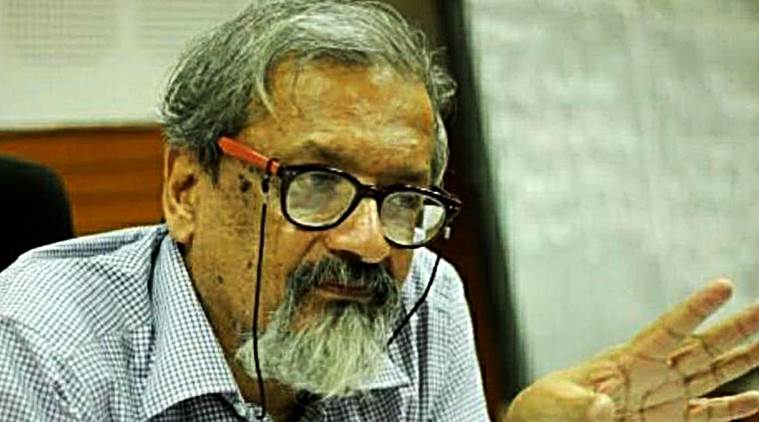
Historian Hari Sankar Vasudevan, who had tested positive for coronavirus , died at a private hospital in Kolkata early Sunday. He was 68.
Vasudevan tested positive two days after being admitted to AMRI Hospital in Salt Lake on May 4. Soon after, he was put on a ventilator after developing respiratory distress. The state government is, however, yet to identify whether he died of Covid-19 or due to comorbid conditions. Vasudevan was an expert on European and Russian history and the India-Russia relationship. A graduate of Cambridge University, where he also completed his post-graduation and PhD, Vasudevan was the director of the China Centre at Calcutta University.
Earlier, he served as director of Maulana Abul Kalam Azad Institute of Asian Studies, Kolkata, of the Ministry of Culture. Between 2003 and 2005, Vasudevan was a professor at Central Asian Studies and acting director at the Academy of Third World Studies, Jamia Millia Islamia, Delhi. Between 2011 and 2014, he was member the Indian Council of Historical Research.
Vasudevan is survived by his wife, historian Tapati Guha Thakurta, and daughter Mrinalini Vasudevan.
Mrinalini told The Indian Express , “My father had tested positive for coronavirus and his condition was critical since Friday. He was on a ventilator. We learnt from the hospital that he died of multi-organ failure. His body is at AMRI, and the cremation will be as per protocol for Covid-related deaths.”
After the historian tested positive, his family members were asked to go into home isolation.
“Only one of my father’s friends will be allowed to see the body. The cremation will be at Dhapa,” Mrinalini added.
Expressing his condolences, West Bengal Governor Jagdeep Dhankhar said in a statement, “A multifaceted person, he made his mark while being involved in a formal consultative capacity with projects/institutions of the Ministry of Culture, MHRD, the Ministry of Commerce and the Ministry of External Affairs of the GoI… His contributions to society will be ever recalled. May his soul rest in peace.”
source: http://www.indianexpress.com / The Indian Express / Home> India / by Express News Service / Kolkata / May 11th, 2020
A Burning, the breakaway novel that everyone is talking about and its Indian-origin author
How New Yorker Megha Majumdar went from being ‘not good in English’ Kolkata girl to talk-of-the-town debut novelist.
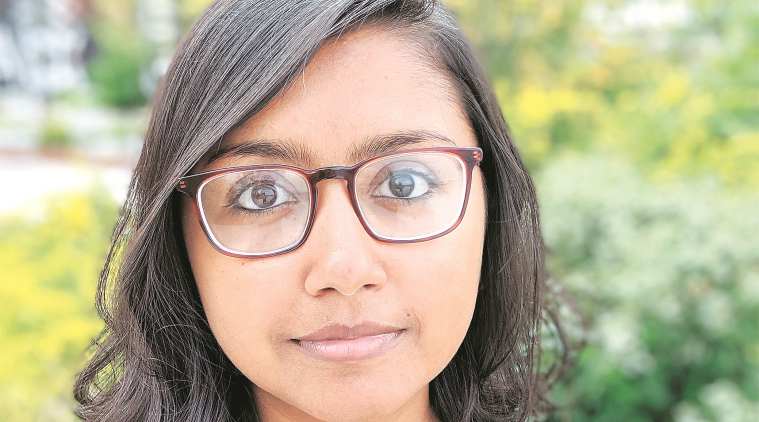
Days before Safoora Zargar, the Jamia Millia Islamia student in jail for protesting against the Citizenship (Amendment) Act , is denied bail for a third time, and while protests against the murder of George Floyd, an African-American man, are spreading across the USA, I am on a video call with Megha Majumdar. The buzz around the 32-year-old New Yorker’s debut novel, A Burning (Rs 599, Penguin Hamish Hamilton), that releases tomorrow, has been dizzying long before its publication. Generous blurbs by Amitav Ghosh and Yaa Gyasi have lauded the book as a zeitgeist of our times; James Wood of The New Yorker remarked on its “extraordinary directness and openness to life” that lays out a patchwork of inequalities in which we might recognise the patterns of our communal lives.
Yet, there’s a strangeness to this time in which fiction’s grip over reality has begun to appear jaded. As an incessant stream of horrors in our sociopolitical lives inures some to its potency and wears others out with outrage, nothing, it seems, can be more aberrant than the present. “This is a difficult, fatiguing time across the world,” acknowledges Majumdar, “So much of this moment here in the US is about historical reckoning. And, of course, I have been following the trajectory of the right wing in India. Scholars and journalists have made the connection between Hindu nationalism and white supremacy. In my book, I wanted to write about people. I wanted to write about how people dream and strive and laugh under oppressive systems.”
A Burning is a quiet, searing study of the underclass and the aspiring middle class in India, whose tentative stake in the capitalist economy is complicated by the many tyrannies of gender, religion and class endemic to society. When Jivan, a Muslim girl from a Kolkata slum, one of Majumdar’s three protagonists, reacts to hate posts against her community on Facebook after a suspected terror attack, with anger and sorrow, but also with a bit of bravura, one knows there will be consequences. “If the police didn’t help ordinary people like you and me, if the police watched them die, doesn’t that mean that the government is also a terrorist?” she writes on Facebook. Retribution is swift — the police come for her soon after. Her social-media friendship with a stranger linked to the case is documented as her complicity and her presence at the railway station on the fateful evening that a train is torched, leaving nearly a 100 dead, as evidence. In one swift action, Majumdar takes readers to the heart of New India, where personal and political ambitions are served or upended by a growing Hindu nationalist churn.
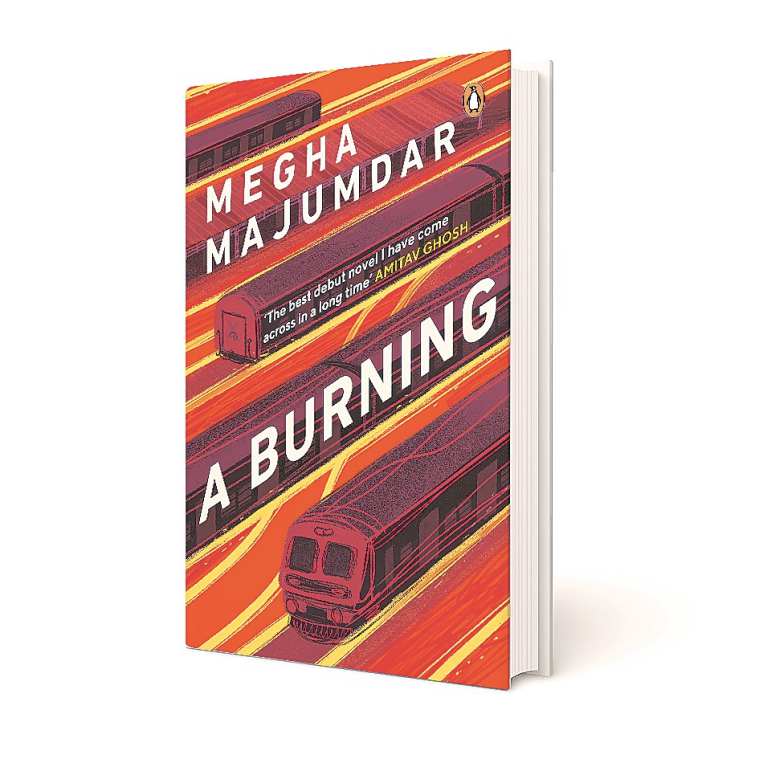
Majumdar’s assured narrative is propelled forward by two other characters linked to Jivan — PT Sir, the physical-education instructor in the school where she was an EWS student, who is drawn to the local right-wing political party, and, Lovely, a transgender woman, whom Jivan taught English, and who dreams of becoming an actor. “I wanted to explore specific questions with each of my characters. Jivan works hard to achieve her goals, which are pretty straightforward — she wants to rise to the middle class. She wants to own a smartphone and work at a mall. Unfortunately for her, she is caught in an oppressive system in which you can do everything right and still be thwarted. With PT Sir, I wanted to examine what a small taste of power could do for a middle-class man like him. What would he surrender, whom would he betray?” says Majumdar, who works as an editor in an indie publishing house, Catapult.
Majumdar grew up in the communist party-governed Kolkata in the Nineties, when the country was waking up to the charms of liberalisation. Change was also afoot in India’s political narrative. In December 1992, kar sevaks aligned to the VHP and BJP would demolish the Babri Masjid in Ayodhya, Uttar Pradesh, that would set off a chain of reactions across the country. Majumdar doesn’t elaborate on when she became politically conscious. “We watched the news that our parents did. We were aware of what was happening around us,” she says. She would leave the city for the US in 2006 to study social anthropology at Harvard University and to graduate school at Johns Hopkins afterwards. But she would carry with her the minutiae of life on the city’s streets.
A Burning pulsates with the cadences of everyday life, the ebb and flow of ambitions, aspirations, disparities and disappointments. As an editor, Majumdar has been familiar with the publishing process, but the book’s reception in the US — touted as one of the best literary debuts of the year — did catch her by surprise. “I’ve been grateful for the positive early attention,” says Majumdar, who has begun work on her second book.
Her editorial expertise shows up in the craft of the novel, in the teasers she throws in by way of episodic interludes, in the cinematic pace with which she alternates between the narrative voices. A Burning is a novel firmly of the here and now, but Majumdar packs in layers of history in her idiosyncratic use of the English language. In West Bengal, the Left-front government had abolished the teaching of English at the primary level in government and government-aided schools in the state since 1981.
It would be brought back to primary classes nearly two decades later, but entire generations grew up with a shaky hold over the language. Overnight, Kolkata would see a proliferation of tuition classes offering lessons in English. Majumdar remembers attending one as a child. In the first year that her parents applied to put her in primary school, she didn’t make it anywhere — “My English wasn’t very good,” she says. So, she was enrolled for English tuitions. The next year, she joined a private school. It was the beginning of a deeper engagement with the language. “A lot of my childhood was spent in public libraries and in second-hand bookstalls, borrowing all kinds of books to read,” she says.
The subtlety with which Majumdar moulds language to the spirit of the city and its inmates rings out best in the voice of her most endearing character, Lovely, who speaks in broken pidgin English that fits into the nooks and crannies of her life. Lovely’s vitality relies on visceral experiences acquired during her travels through the city, and minute observations that make up for a lack of formal education. It is here, in the authenticity of the polyphonic voices that people her fictional landscape, that Majumdar’s novel soars.
Like Deepa Anappara’s Djinn Patrol on the Purple Line earlier this year, the exhilarating response to A Burning in the West owes a hat tip to ticking all the boxes that make the India story familiar — jagged inequality, religious roil and irrepressible hope. “I wanted the book to be legible and inviting for those who have never been to India and do not follow Indian news, as well as to those who have lived in India all their lives. I wanted the book to be an act of invitation, to open imaginative doors to the many different, complex stories that one might follow,” she says.
source: http://www.indianexpress.com / The Indian Express / Home> Books & Literature / by Paromita Chakrabarti / June 14th, 2020
Raj Mahtani’s Paris in Calcutta jewellery collection: Celebratory union of the world’s most iconic cities
Paris in Calcutta equates the beauty of the two cities by drawing parallels between the ambience, the architecture, the grunge, the art and the heritage.
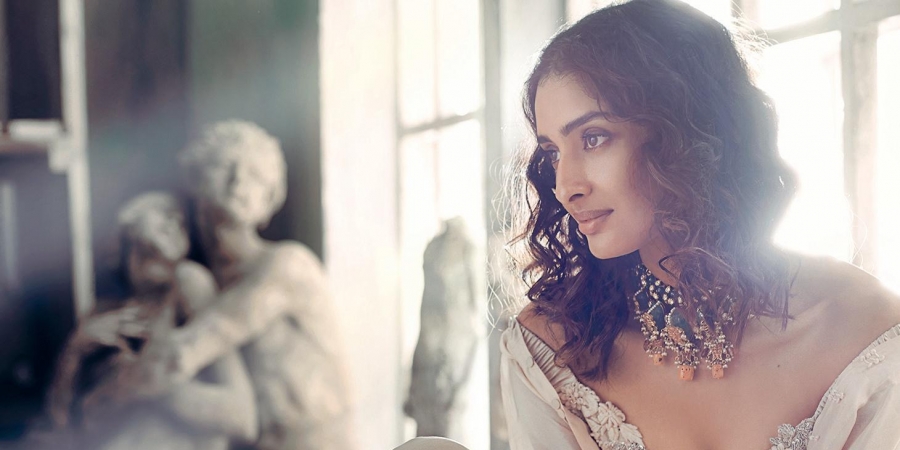
When Raj Mahtani showcased his creations along with couturier Anamika Khanna at Paris Fashion Week in 2008, it could well have been a prophetic moment for the first Indian jeweller to have done so on that esteemed international platform. More than a decade later, as his house of couture jewels enters its 20th year, the Kolkata-based master jewellery designer is ready to floor connoisseurs with a collection that brings together the cultures and concepts of Kolkata and Paris in a celebratory union.

Paris in Calcutta equates the beauty of the two cities by drawing parallels between the ambience, the architecture, the grunge, the art and the heritage. The ornaments and adornments belie the conventional Indian wedding jewellery narrative to suit a more global context deriving from the European vocabulary of opulence in a modern format.
Known for creating concept luxury jewellery that marries the core of a Mughal sensibility (as well as Ottoman influences) to a more Western canvas, Mahtani has always strived to elevate the art of Indian jewellery to suit a modern palate. His penchant for creating statement neckpieces saw him present some of the most eye-popping polki and jadau collars, body corsets and scarfs along with Khanna’s clothes at the Paris Fashion Week that year. Courting immense critical acclaim and commercial laurels, Mahtani soon recognised the potential of his craft in India. The modern Indian woman, with an evolved, bold outlook and a confident sartorial sense was ready for the avant garde in bijouterie.
Thus, Mahtani started his fascinating journey that broke the traditional concepts of wedding and occasion wear. While drama is one element that marks his pieces, subtle elegance is another leitmotif. But no matter how simple the pieces were, they always sprung surprises of technique or execution (a diamond caterpillar necklace reflects the art of dynamism in diamonds, a gold choker that resembles crochet lace). The Paris in Calcutta collection, too, features some remarkable statement pieces that look extravagant, yet create a narrative of versatility and viability.

Bold, handcrafted pieces that take the onlooker’s breath away, each piece is a marvel in intricacy and artisanship that Satramdas Dhalamal, the family of jewellers that Mahtani is from, is legendary for.
Entering its 140th year, the designer has big plans for the mothership as well as his label in 2020. “These are pieces constructed in a manner so that they can be broken down into smaller pieces. We want patrons to wear them regularly instead of storing them away in lockers. These are jewels to be loved and worn again and again,” says Mahtani showing us a layered polki necklace that can be worn in six ways. And a curling wrist cuff encrusted with sapphires and diamonds that opens up to form a scintillating hasli.
“When we think of an Indian bride, the entire look had become too straight-jacketed. I wanted to break that notion. This is wedding jewellery for the bride who is a global citizen. She travels, she takes in the sights, sounds and cultures of a world village. She deserves jewellery that is so much more—demure, elegant, yet wow. Because simple needn’t be boring,” says Mahtani sitting amidst a veritable selection of jewellery.
The need to push the envelope in the field of wedding jewellery arose when Mahtani lived and worked in Europe in the 1990s, taking in how tastes and preferences in fashion were changing internationally. “The modern woman does not want to look like a bag of jewels. It’s one striking piece—a ring, an earring, a cuff, or a necklace—that does the trick. The definition of refinement and the context of couture jewellery has seen a sharp curve, bordering on boho-chic, functionality and the element of drama,” says the jeweller.
Indeed, if you’re looking for sheer, dramatic elegance, the Paris in Calcutta collection is right up your street.
source: http://www.newindianexpress.com / The New Indian Express / Home> Magazine / by Sharmi Adhikari / January 25th, 2020
A model, an emcee, and a school principal
Yes, that’s Jessica Gomes Surana
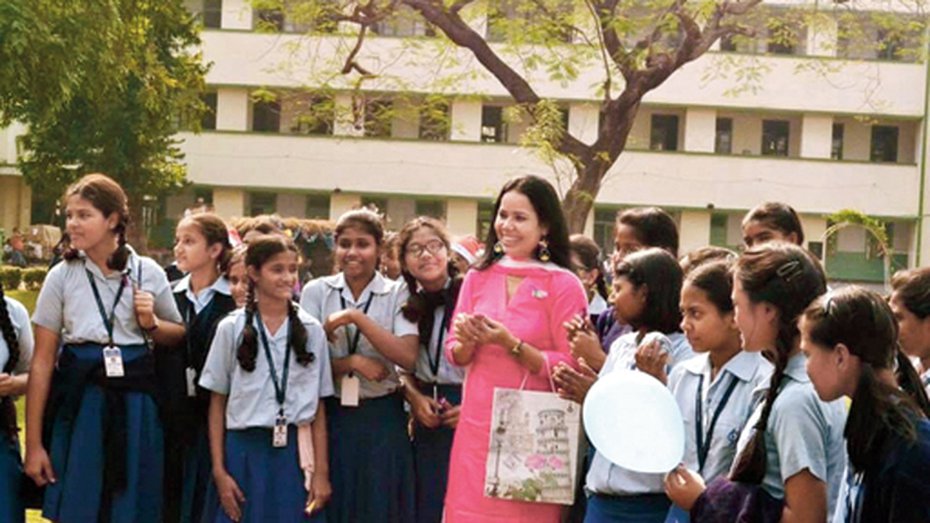
A regular face on the Calcutta ramp for almost 15 years, Jessica Gomes Surana has transitioned beautifully into an academician in the role of the principal of Loreto Convent Entally. Teaching has always had a special place in her heart, be it as the tuition teacher during her college days to a fashion choreographer later on. A celebrated emcee, Jessica who studied at St. Teresa’s Secondary School, Loreto House, Loreto College (BSc), Ballygunge Science College (MSc in geography) and is a BEd from St. Xavier’s College, has juggled her career and academics deftly. As she enters her fifth year as the Loreto Convent Entally principal, she chats with us on the milestone and more.
How did you celebrate this feat during the lockdown?
Thank you for coming on board to celebrate the most wonderful journey of my life. May 2 is truly a life-changing date — a day when I stepped into a whole new world. I was all excited to be in school this year as I would be entering my fifth year as principal, but then came the lockdown. I began the day by thanking the almighty God and asked him to give me the strength to continue to contribute to the empowerment of children. I sent gratitude messages to my mentors, my staff members and my husband. We had a special lunch with the family.
Can you take us through the journey? How has life changed? What have been the learnings?
It all began with a phone call on November 23, 2015, while I was shopping in New Delhi for the party month that lay ahead. I heard the voice of my favourite English teacher (Plus-II level) on the other side. I was not too sure whether the voice was inaudible or rather the surprise question had numbed my being. ‘Jessica, I was wondering if you would be interested in taking up the position of a principal in one of the branches of our Loreto schools?’ I stared into space and it took me a few minutes to reply, rather sheepishly, ‘Miss can I call you back tomorrow as I am in the market and it is a little noisy here?’
At this point of time, I was teaching at South City International School and had had a one-year stint at La Martiniere For Boys prior to this and then this HUGE opportunity coming my way made me pinch myself to believe that it was actually true and not a dream. It then took a few months to roll through a series of interviews, which were rather unnerving not because the questions were tough but only because the interviewers were my principal of my schooldays and other senior sisters and members of the institution. And then came the big question — when would you like to take up the responsibility of being a principal of one of our schools ? This was simply unbelievable — miracles do happen and one had just happened to me.
I took over as the principal of Loreto Convent Entally on May 2, 2016 and life has never been the same since then. In the first year, it was more about observing and finding ground for myself in this 175-year-old institution. In the second year, it was more about planning and in the next two years execution of my ideas and innovations began. Educating myself was of paramount importance. I was very fortunate to have two wonderful mentors, Sister Antoinette Rodrigues and Sister Tina Farias (secretary of the managing committee of Loreto Convent Entally), who handheld me along this journey and strengthened me every single day.
This four-year journey has brought about a positive change in my life. Being a model, you tend to be self-centred… but being a principal makes you selfless.
I have become more sensitive and do not judge people at the drop of a hat. I have learnt how to respond rather than react to situations. I have been blessed with the gifts of wisdom, discernment, understanding and knowledge to do what is right. I have come to believe that respect for ourselves guides our morals; respect for others our manners. Every relationship today holds more value than what it did earlier.
I have become a woman of prayer with a higher understanding of the presence of God in our lives.
Did you always want to be a part of education?
Yes, as a little girl I draped my mum’s dupatta as a sari and imagined myself as a teacher amongst my cousins. I began giving tuitions from my first year in college and continued throughout my modelling career. I was always passionate about teaching. I still continue to take classes in geography for Class X and XII.
How did you juggle your academics and a full-fledged modelling career and later on the role of an emcee?
I began modelling towards the end of my first year in college. It was challenging as I wanted to excel in academics (which I did) as well as pursue my modelling career. I have always been disciplined and dedicated and that has helped me. I have been a multitasker from the very beginning. Be it college, tuition and modelling together or university, tuition, modelling and emceeing, or even teaching, tuitions, modelling, emceeing and choreography… I have always converted my day into 48 hours.
How?! Some time-management tips please!
Plan your day well in advance. While planning, do remember to keep small key holes in case of sudden changes, so you will not have to scrap the whole plan. Flexibility is a must to create a little movement whenever necessary.
Try and schedule your work in such a way that it does not take a toll on you. After a heavy day of meetings and classes, you can relax with some physical activity… a swim or a yoga session.
Your daily timetable should develop into a weekly one where you are able to even catch a movie or meet up with friends or even dance away.
What has been the easiest part of the transition and the most difficult?
The easiest part was my connection with the children. Initially, they were more in awe and glamour-struck but with the passage of time they looked at me as a role model and someone they could trust. The most difficult part was to make people believe that a model could be positioned at the helm of an educational institution by pure merit. But I guess that is quite understandable as no other model has ever merged the two parallel lines.
It’s only been four years and I have been able to somewhat change that perception. Today, people take me seriously and wait to hear my opinion and that has made me believe that nothing is impossible, your hard work and dedication is what brings you success.
How do you choose assignments now?
Today, my first priority is my school and my children. I choose assignments based on my availability and also my long- standing relationships with the brands that I have worked with over the years, ABP being one of them. I am very selective today. The event needs to be worth my time.
What is a typical day in your life like?
My day begins at 5am with a little bit of yoga, followed by preparation of breakfast and tiffin boxes. The car rolls out of the building at 6.45am, dropping off my little girl and then my boy and finally me. Believe me, half my energy has already been expended by then! School is done by 4.30pm and we are off for swimming to de-stress. Then comes study time followed by me whipping up some tasty dinner for the family. By 10pm, it’s time to relax and get ready for the next day. On an event day, post-school I race off to the venue. While driving there, all kids’ activities are coordinated. I usually use my travel time in visiting my social media pages to keep myself updated. Sundays are most hectic as the household chores seem never-ending and the kids’ extracurricular activities interweave themselves, adding to the load.
What do you do to keep fit ?
Having a fitness expert as your husband (Neeraj Surana) at least helps you believe that you are fit if nothing else! On a serious note, a little yoga for keeping my mind stable coupled with a half-hour swim five days a week in summer, which converts to walks during the rest of the year, keeps me going. Lately, I have been trying out intermittent fasting, which seems to be doing good as my overeating is in check. But, by and large I am constantly on the move.
What would be your tips for models about having a back-up plan in place?
A back-up plan is something I strongly advise. There is no substitute to education, so please go ahead and pursue higher education. I do not buy that lame excuse that modelling does not give you time, you have all the time in the world. Work towards an alternative career as modelling is a temporary profession and very few can successfully diversify from there into acting, emceeing, choreography…. This will keep you disciplined, grounded and most importantly, mentally stable. It helps to keep your dignity intact and gives you the power to choose your own assignments and also demand your worthy professional fee. Most importantly, it empowers you in more ways than you can imagine. I really find it strange and immature to see some of my seniors and contemporaries still behave like as if they are in their 20s. I guess they would have fared better in life if they had a back-up plan.
A special word for your support system…
I truly believe, “Teamwork is the fuel that allows common people to attain uncommon results”. I consider myself blessed to have a husband who has been beside me for almost 20 years as a friend, critic, well-wisher and a wonderful human being. He has given me the space to grow and spread my wings. My two little kids who adjust to all my erratic timings and my mum-in-law who fills in for me on the home front. My siblings who take pride in all my achievements and never hesitate in telling me to slow down and get some ‘me time’.
On the work front, a very supportive Loreto Education Board and the Loreto sisters whom I am ever grateful to. A special note of gratitude to Sister Anita Braganza (president of Loreto, South Asia) who saw potential in me and gifted me this most enriching experience.
source: http://www.telegraphindia.com / The Telegraph, online edition / Home> People / by Saionee Chakraborty / May 12th, 2020
Films speak a universal language: Bengali director whose Malayalam film made it to Cannes market
After three silent films, Bengali filmmaker Aneek Chaudhuri has helmed a Malayalam film — a first for someone from Bengal. The film is now part of Cannes 2020 and will be screened later this month.
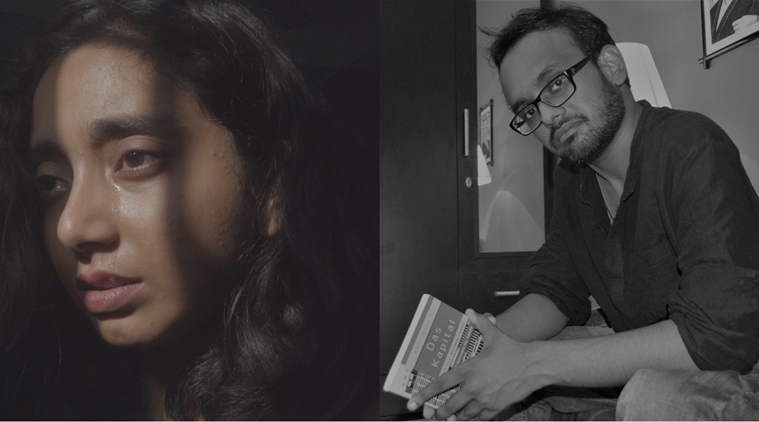
Art transcends barriers. So, it should come as no surprise when a Bengali decides to make a film in Malayalam. However, for Kolkata-based filmmaker Aneek Chaudhuri — whose Malayalam film Katti Nrittam is part of the Marché du Film at the Cannes Film Festival 2020 — it’s the one question he gets asked all the time.
“Films speak a universal language,” said Chaudhuri, 28. It’s a fitting answer from someone who first forayed into cinema with silent films. A film in Malayalam then — a language he doesn’t speak himself — is a natural progression. “I believe that cinema should not have any kind of language barrier,” he said.
Katti Nrittam — a thriller about a failed Kathakali dancer who turns into a psychopathic killer — made a mark earlier too, when its script was included in OSCARS’ Margaret Herrick Library in California— regarded as one of the finest film-related libraries in the world.
In its 73rd edition, the Cannes Film Festival, which is scrapping its physical event for a series of virtual screenings on account of the COVID-19 pandemic, will launch the Marché du Film or the festival’s Film Market online to support industry professionals around the globe. Katti Nrittam is one among the many being screened during the five-day virtual event between June 22 and 26.
Chaudhuri’s previous films — The Wife’s Letter (2016), White (2018), and Cactus (2018) — were also screened at Cannes. However, it is for the first time he won’t be there in Paris to present his film.
First Malayalam film from Bengal
While Katti Nrittam, meaning the Knife Dance, is a modern-day adaptation of ‘The Mahabharata’, the film also draws inspiration from O. Henry’s short story ‘The Cactus’ (1902).
Starring Rahul Sreenivasan, Rukmini Sircar, Sabuj Bardhhan, Anuska Chakraborty and Aritra Sengupta in major roles — it’s the first Malayalam film by someone from Bengal.
“Malayalam Cinema is indeed the best form of Indian Cinema these days,” said Chaudhuri, explaining his choice of language in an email interview. “They have found a way to integrate mainstream and parallel cinema.” However, it was his trip to Kerala’s Kalamandalam in 2018 that further sparked his interest in Malayalam arts and culture.
(Read this story in Malayalam)
The film, which took almost a year to finish as Chaudhuri started to work on the script in early 2019, was primarily shot in Kolkata. The only difficulty was finding locations that resemble Kerala closely. So would it not have been easier to shoot in Kerala itself then? “Yes I could have but that would mean I need to drop out a lot of technicians from Calcutta without whom I cannot work. They wait for me to make a film so that they can work in terms of creative liberty I provide them,” he said.
A modern day Mahabharata
In Katti Nrittam, Chaudhuri uses the graceful Kathakali dance of Kerala to articulate a story of violence. “When I had decided to adapt Mahabharata on-screen, I had to make the killings classy and beautiful and I thought of nothing but this dance form,” he said.
In the film, Arjuna is portrayed through a Kathakali dancer. “After studying the patterns of murderers like Ted Bundy, I believe that for them, killing was a form of art,” said Chaudhuri, “We had to beautify the process of killing.”
In his modern-day interpretation of the epic, Chaudhuri tries to do what otherwise is a taboo: highlight the darker sides of the divine. Answering if the epic — which he dubbed one-dimensional — is still relevant, he said, “Sometimes the interpretation of an epic is directly proportional to the times we are living in.”
‘People expect a change’
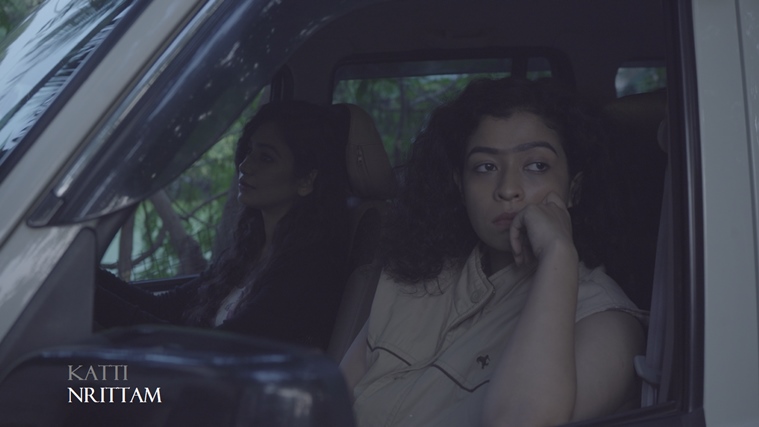
Winning many accolades and awards in the last couple of years, Chaudhuri’s films often put women at the centre. His last directorial work Cactus portrayed Jesus Christ as a woman and White was a poignant silent film about rape.
Katti Nrittam is no different: while the film narrates a complex tale of a quadrilateral love based on Henry’s novel, the gender roles have been reversed.
Talking about his women-centric films, the filmmaker, admitted that he is inspired “a lot” by women. “I would try to look out for feminist dimensions in every character I read or create, because women are so damn interesting,” he said, “They can do everything and that too, successfully. And I strongly believe that the world was created from a woman’s point of view that’s why we are still safe; they are the most able and organised people, I must say.”
Chaudhuri’s film has been received positively in Kerala — “But back home, people think that I am in too much of a hurry,” he said.
“In Bengal, you don’t get the space to film alternative stuff. People might be in the legacy of auteur, but most of them in the current scenario are not original and inclined toward earning rather than creating. Now, that is alarming, isn’t it?” said Chaudhuri.
However, it is in his audiences that he has hope. While Katti Nrittam is expected to have a commercial release in 2020, Chaudhuri has spent the lockdown working on a feature-length film titled The Symphony of Pansies with a Lebanese artist Stephanie Bou Chedid. “And if all goes well, something big in 2021,” he said, without divulging further details. “People expect a change.”
source: http://www.indianexpress.com / The Indian Express / Home> Entertainment> Malayalam / by Shreya Das / June 03rd, 2020